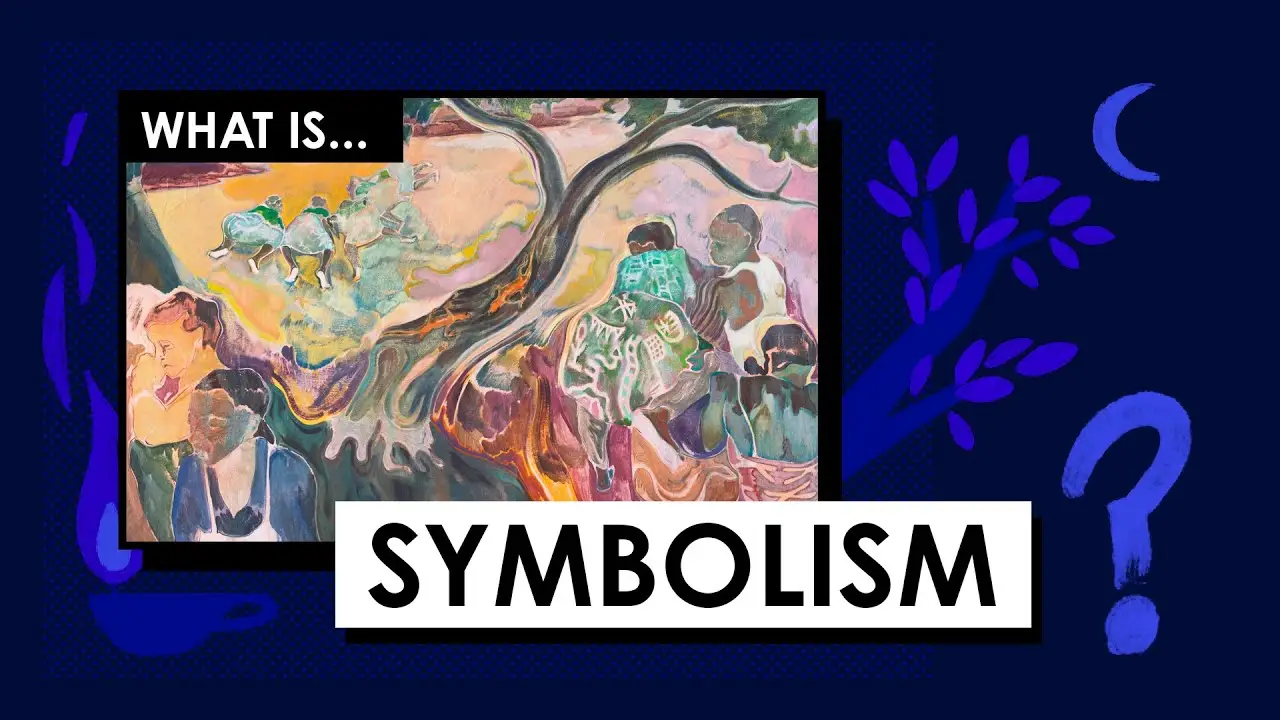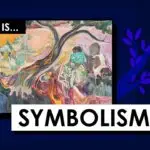The Secret Language of Symbols in Art
Ever wonder how artists speak without words? The 19th century was buzzing with change, and symbolism was quite the artistic whisper. As the world spun faster with industry and science, some folks felt a touch lost. And that’s where symbolism strutted in, painting dreams and visions on canvas, and humming through the notes of music.
Symbolism emerged as a response to the rapid changes sweeping through society during the 19th century. As the Industrial Revolution brought technological advancements and urbanization, people were grappling with feelings of alienation and disconnection from nature and the spiritual. In this context, symbolism became a refuge, a way for artists to express the ineffable, to delve into the subconscious and explore the mysteries of existence. It was a movement that sought to transcend the mere representation of objects and instead focus on the feelings and ideas that these objects could evoke.
These artists? They were the rebels—no one-trick ponies. Each one danced to their own beat, expressing the unseen and the mystical. Their brushstrokes and melodies were a canvas for love, fear, and everything in between. Think of Odilon Redon, a chap who brought nightmares to life with lithographic prints that made folks do a double-take. He tickled imagination with strange figures that seemed as real as your last dream.
Odilon Redon’s work is a perfect example of how symbolism allowed for a deep exploration of the human psyche. His “noirs,” or black-and-white lithographs, were filled with fantastical creatures and bizarre landscapes, inviting viewers into a world that was both unsettling and captivating. Redon believed that art should not replicate the visible world but should instead give form to the invisible, to the emotions and thoughts lurking beneath the surface. His work was not just about what was seen, but about what was felt—a crucial tenet of the Symbolist movement.
Gauguin’s Bold Brush
Picture this: Paul Gauguin, another fearless painter, with his work “Vision of the Sermon” painted a whole new world. In the story, Jacob grapples with an angel, but the real grappling is with our own minds. The colors pop, and the boundary between real and imagined blurs—just like a daydream that feels too real.
Gauguin’s use of bold colors and abstract forms in “Vision of the Sermon” was revolutionary, moving away from the naturalistic depictions favored by his contemporaries. The vibrant reds and oranges used in the painting were meant not just to catch the eye, but to convey the intensity of the inner spiritual experience. This was a radical departure from the realism that dominated the art world at the time, and it opened the doors for future generations of artists to explore more personal and subjective realms in their work.
Gauguin was deeply influenced by his travels, particularly his time in Tahiti, and his work often sought to capture the spiritual essence of the places he visited. He was drawn to the idea of the “primitive,” which he saw as a purer, more authentic way of life untainted by industrialization. While this perspective is problematic today, it was part of a broader quest amongst Symbolists to find deeper truths and meanings beyond the surface of modern life.
Beyond Borders
But hold on, it wasn’t just a French affair. Scottish artist Frances MacDonald McNair added her own flair, blending the decorative with the dreamy. Her figures were like ghosts from a different land, floating through our consciousness.
Frances MacDonald McNair was part of the Glasgow School, a group of artists who were instrumental in bringing Symbolism to the United Kingdom. Her work often featured ethereal, elongated figures set against intricate backgrounds, weaving together elements of mythology and personal symbolism. Her art was deeply influenced by the Art Nouveau movement, which emphasized decorative beauty and organic forms, but she imbued it with a sense of mystery and otherworldliness that was distinctly Symbolist.
MacDonald McNair’s work also highlighted the role of women in the Symbolist movement, which often went unrecognized. Female Symbolists, like their male counterparts, sought to explore themes of spirituality, mythology, and the unconscious. However, they also brought a unique perspective to the movement, often challenging traditional gender roles and exploring the complexities of female identity through their art.
Fast forward a bit. Symbolism’s fingerprints are all over art history. From Picasso’s boldness to Dalí’s melting clocks, the echoes of those 19th-century rebels are hard to miss. And today? Artists like Michael Armitage weave tales that mix past and present—a nod to the old while dancing with the new.
Pablo Picasso and Salvador Dalí, though not Symbolists themselves, were undoubtedly influenced by the movement’s emphasis on the subconscious and the symbolic. Picasso’s Cubism broke down forms into abstract shapes, allowing for multiple perspectives within a single piece, while Dalí’s surreal landscapes brought dreams and the irrational to the forefront of his art. Both artists, in their own ways, continued the Symbolist quest to depict the unseen and explore the depths of the human mind.
In contemporary art, the legacy of Symbolism lives on. Artists like Michael Armitage draw on Symbolist techniques and themes to address modern issues, weaving together elements of history, mythology, and personal narrative. Armitage’s work often blurs the lines between reality and imagination, inviting viewers to question their perceptions and consider the deeper meanings behind what they see. It’s a reminder that the language of symbols is as relevant today as it was over a century ago.
The Everlasting Impression of Symbolism
So, as we dive into a new age of tech and change, maybe we’ll find ourselves flipping through the same old book of symbols, searching for new chapters. The story of symbolism isn’t over; it’s just taking a coffee break. Mugs for every occasion might just be the perfect companion as you ponder over these age-old mysteries.
As we continue to navigate a world of rapid technological advancement and cultural shifts, the need for symbols and the exploration of deeper meanings remains ever-present. Symbolism offers a way to connect with the intangible aspects of life, to express what cannot be easily put into words. In a time where information is abundant and often overwhelming, symbols provide a means of distilling complex ideas and emotions into something more graspable.
Moreover, the symbolic language of art encourages a personal connection between the viewer and the artwork. It invites interpretation, allowing each individual to bring their own experiences and emotions to their understanding of a piece. This personal engagement with art is what makes symbolism so enduring, as it continues to resonate with people across different cultures and generations.
In today’s globalized world, the blending of cultural symbols and artistic traditions is becoming increasingly common. Artists are drawing inspiration from a wide array of sources, creating works that reflect a diverse and interconnected world. This global exchange of ideas is enriching the language of symbolism, allowing it to evolve and adapt to the complexities of modern life.
As we look to the future, the enduring power of symbols in art reminds us of the importance of imagination and introspection. In a world that often prioritizes the tangible and the measurable, symbolism encourages us to look beyond the surface and explore the richness of the human experience. Whether through a painting, a piece of music, or even a humble mug, symbols have the power to connect us to something greater, to inspire and provoke thought, and to remind us of the beauty and mystery that still exists in the world.





